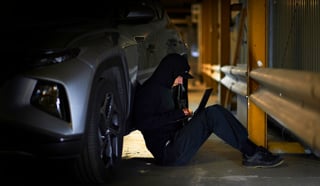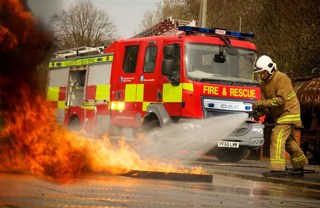The Driving Instructors Association (DIA) is putting its weight behind the Lightmare campaign, which has been organised to fight the growing road safety issue of blinding lights affecting a driver's ability to perceive hazards.
The amalgamation of two separate organisations - Blinded Bi-Xenon and Drivers Against Daylight Running Lights (DaDRL) - Lightmare is the culmination of many years of work from both organisations on the effects of bright lights on road safety.
Ken Perham, a night-time London taxi driver for the last 40 years, has been campaigning about the intensity of the modern ‘high intensity discharge' (HID) headlight system. The technology involves the headlights to ‘float' and respond to the undulations in the road surface. As this system cannot be checked sufficiently during an MOT test, vehicles fitted with it can dazzle oncoming road users, in contravention of the Construction and Use Regulations 1986 and the Road Vehicle Lighting Regulations 1989.
Perham said: "These lights are up to three times brighter than a standard halogen headlight and the HID system causes severe distraction to a driver approaching them, to the point that the intensity of these lights hides less conspicuous objects, such as motorcyclists, cyclists and pedestrians, putting these vulnerable groups in danger. This situation must be considered as an urgent matter to be redressed by the government."
Perham has teamed up with Roy Milnes, who has been at the helm of DaDRL for the last 12 years. He has been involved in a worldwide campaign involving other organisations and ophthalmologists to look at a more common-sense way of vehicle lighting for daytime use.
New laws that come into effect in the UK from Feb 2011 mean that daytime running lights - which are 50% brighter than standard dipped headlights - will be mandatory for all new European-built vehicles. Motorcycle and bicycle action groups are concerned that the proliferation of lit traffic streams will make less visible cyclists and motorcyclists more vulnerable within those streams.
Milnes said: "Car drivers are already overprotected in their vehicles, thanks to safety cages and in-vehicle technology. Cyclists, motorcyclists and pedestrians don't have this luxury."
Milnes has worked extensively with Dr Peter Heilig, professor of ophthalmology at the University of Vienna, who was instrumental in getting the EU legislation on daylight running lights withdrawn in 2006, after the Austrian national road safety statistics showed a 12% increase in road casualties upon introduction of mandatory daytime running lights.
Howard Redwood, head of road safety at the DIA, said: "Lightmare has collected a staggering amount of data and produced a very strong case to persuade the UK government to reconsider the current MOT system and the need for daytime running lights. The DIA are more than happy to get behind this campaign."





















Login to comment
Comments
No comments have been made yet.